Shizuko Kurohas Japanese Patchwork Quilting Patterns


Easy Projects with Square, Triangle and Hexagon Piecework Accents These handy items have simple piecework made from a maximum of three different pattern pieces. Try a variety of patterns and make multiples! 1 Mini Tote Bag This little tote is just the right size to fit a wallet, cell phone and sunglasses. Shorter handles maintain the overall proportion of the shape. 1 in (3 cm)-square pieces form the patchwork. Its possible to eke out pieces from even your smallest scraps.
InstructionsSquare Quilt Block Lesson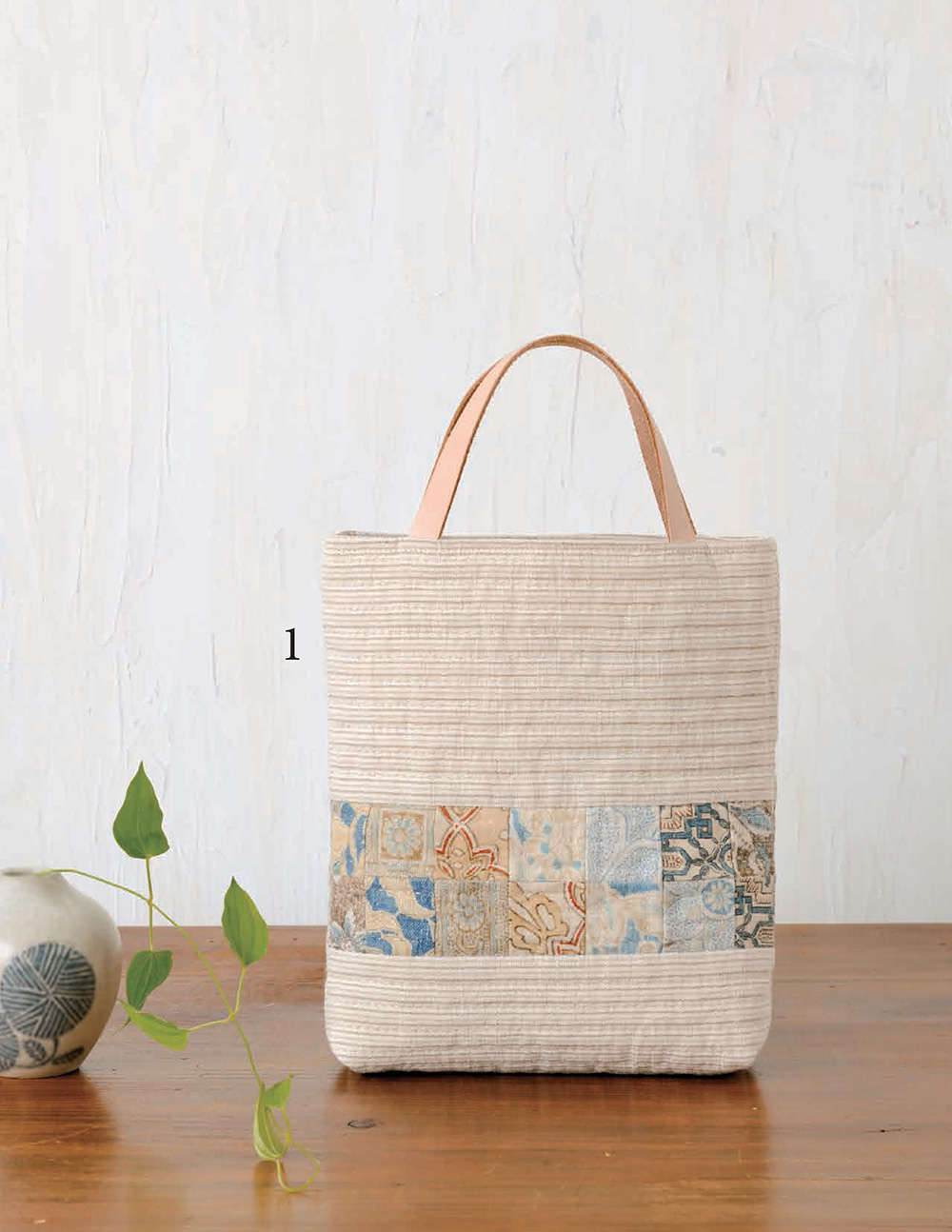
2 3 Zippered Pouches This unique design has a tissue case on the zippered side of the pouch.
A staggered brick pattern accents pouch number 2. Number 3 features hexagons strung together in a row; triangles fill the spaces between the hexagons. Instructions for this method are given on . InstructionsTriangle Quilt Block Lesson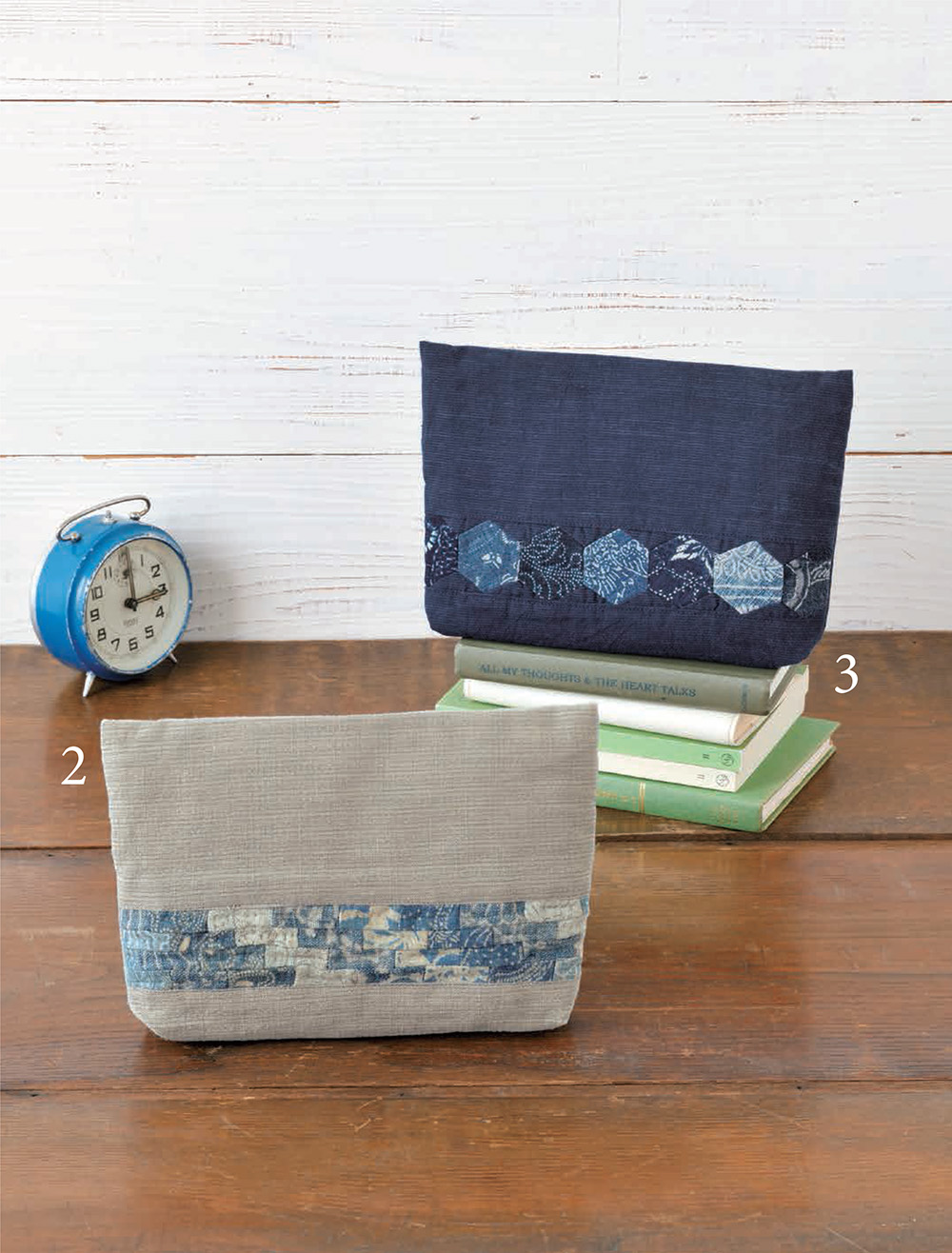 Find a Pattern You Like to Create a Particular Mood 4 Drawstring Bag Striped indigo and grey with triangle patchwork for a sharp, modern feel. Quilting along the inner edge of the triangles is easier when the needle is inserted on the outer section of the trimmed seam allowance. InstructionsTriangle Quilt Block Lesson
Find a Pattern You Like to Create a Particular Mood 4 Drawstring Bag Striped indigo and grey with triangle patchwork for a sharp, modern feel. Quilting along the inner edge of the triangles is easier when the needle is inserted on the outer section of the trimmed seam allowance. InstructionsTriangle Quilt Block Lesson 5 Drawstring Purse The curved patchwork is versatile and depending on how the pieces are laid out, a variety of patterns can be achieved.
5 Drawstring Purse The curved patchwork is versatile and depending on how the pieces are laid out, a variety of patterns can be achieved.
For this purse, the pieces are arranged to create a floral motif in the center. The corners of the bag are rounded as well to mimic the patchwork. Please refer to for how to create a curved quilt block. InstructionsCurved Quilt Block Lesson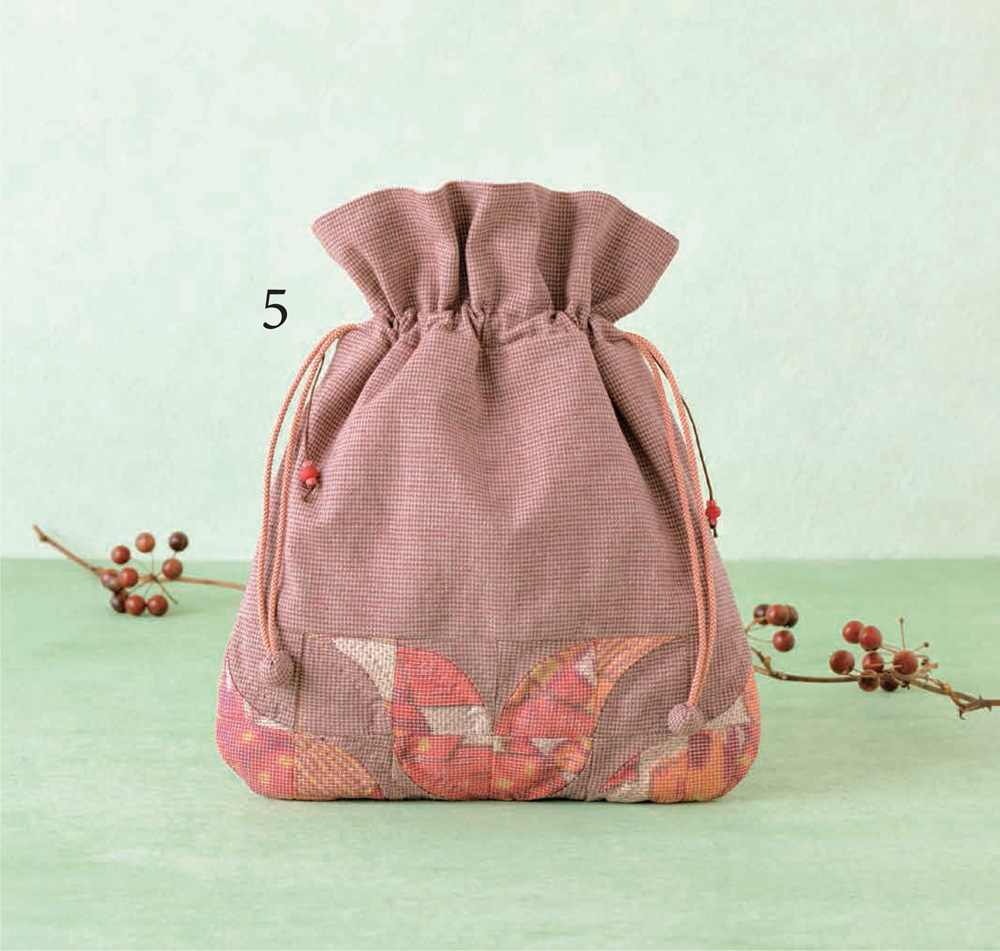
 For the Drawstring Bag (4) thread the string loops to face in opposite directions, which makes pulling them easier. For the Drawstring Purse (5), pulling the lower beaded strings opens the gathers of the bag in the Japanese karakuri purse style.Add Piecework Flair to a Utilitarian Backpack with Matching Card & Coin Case 6 Light Backpack The strings that gather the opening closed become the shoulder straps for this design. Depending on how theyre tied, the strap lengths are easily adjustable.
For the Drawstring Bag (4) thread the string loops to face in opposite directions, which makes pulling them easier. For the Drawstring Purse (5), pulling the lower beaded strings opens the gathers of the bag in the Japanese karakuri purse style.Add Piecework Flair to a Utilitarian Backpack with Matching Card & Coin Case 6 Light Backpack The strings that gather the opening closed become the shoulder straps for this design. Depending on how theyre tied, the strap lengths are easily adjustable.
If the contents are light, tie the two straps together and sling onto one shoulder. For heavier loads wear the straps like a traditional backpack. Instructions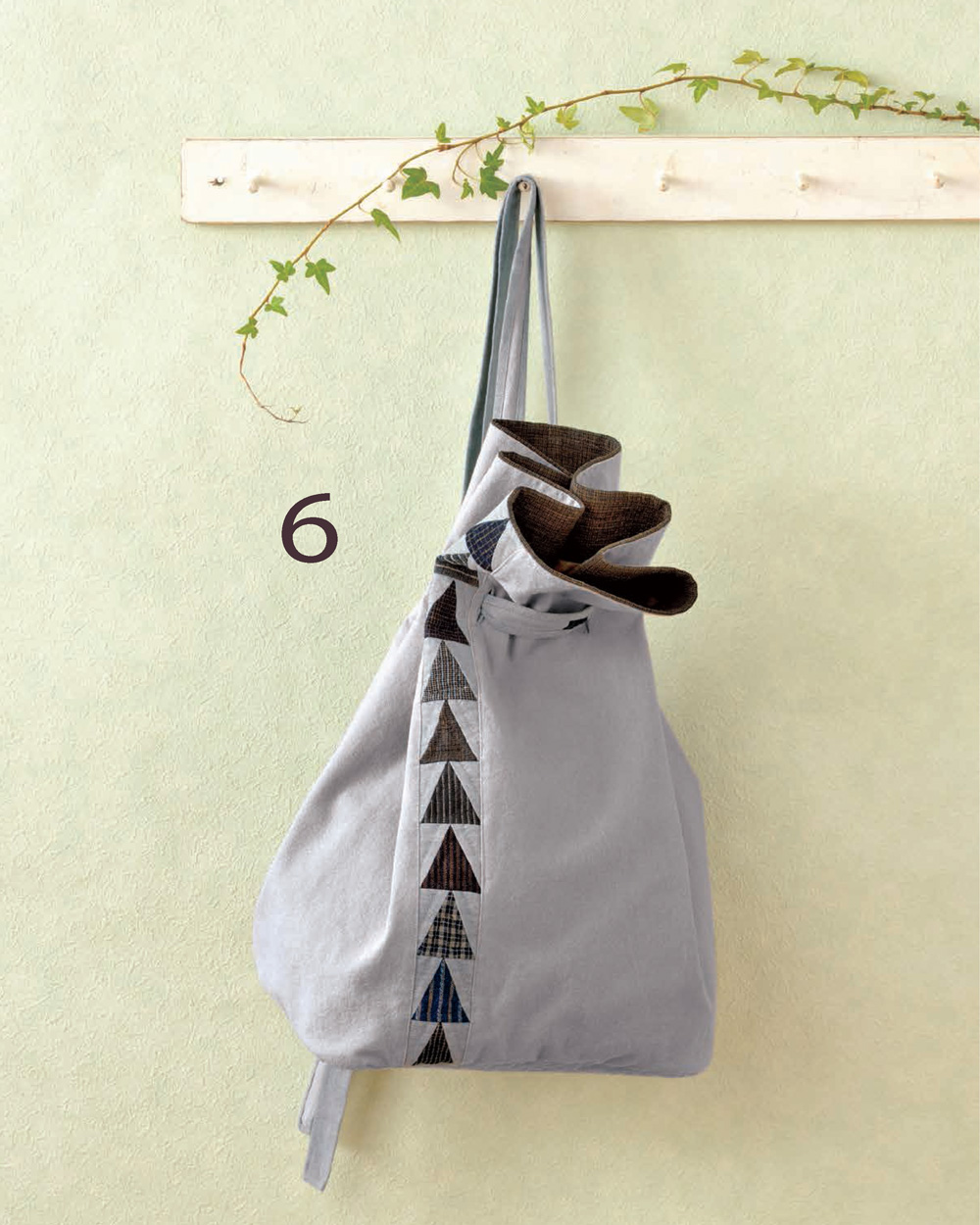 7 Matching Card & Coin Case Ideal for a drivers license and loose change, this case seamlessly matches the backpack in design 6. Because the backpack has a pocket and loop on the exterior, consider attaching the case and a key reel to the loop for quick access. Instructions
7 Matching Card & Coin Case Ideal for a drivers license and loose change, this case seamlessly matches the backpack in design 6. Because the backpack has a pocket and loop on the exterior, consider attaching the case and a key reel to the loop for quick access. Instructions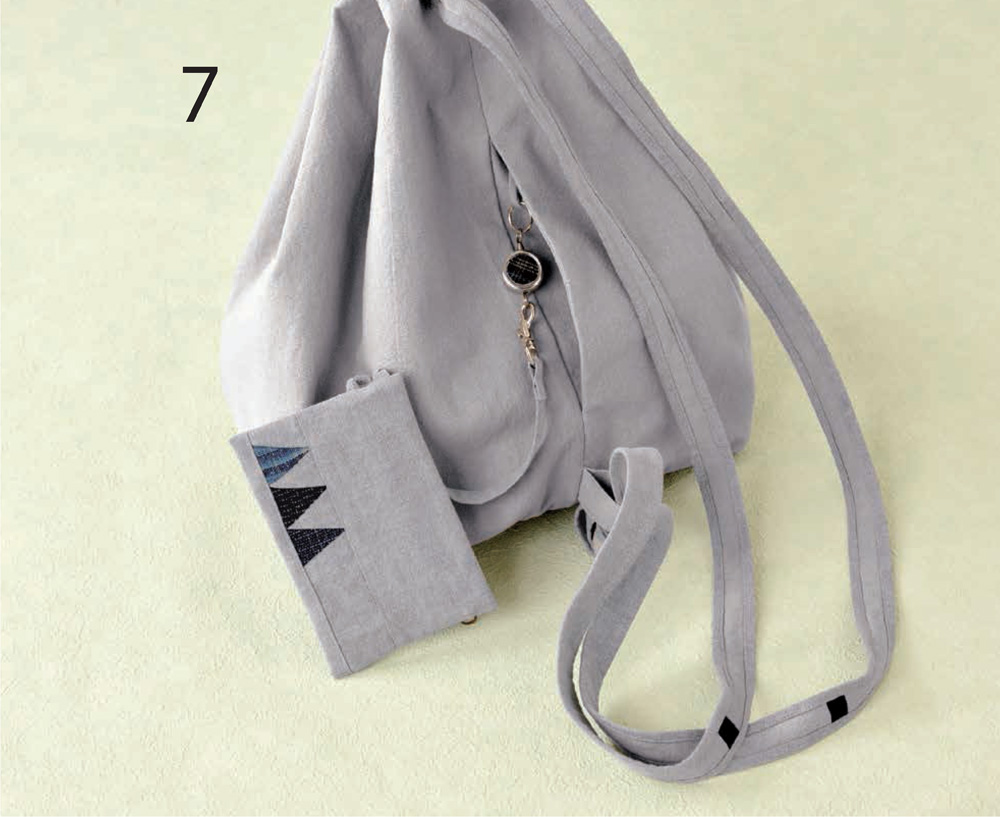
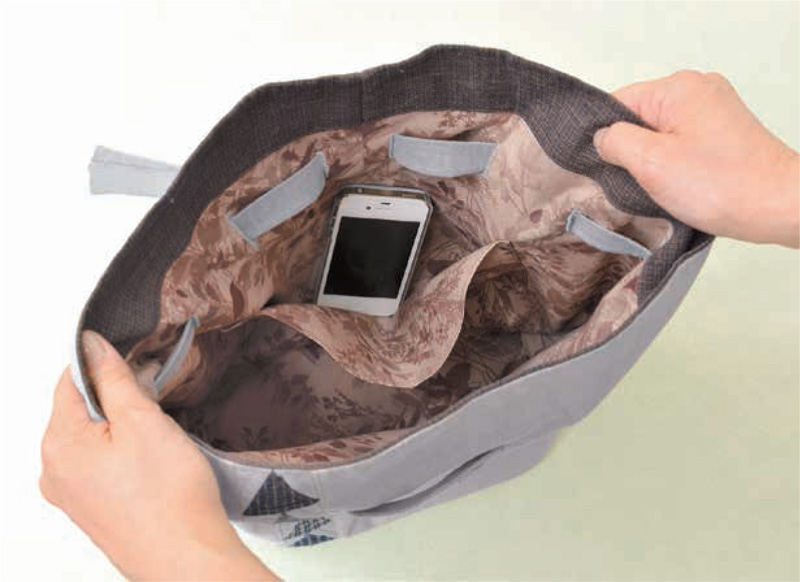 Inside the pack, a pocket is positioned against the back, a perfect spot for valuables and a phone. Basic Piecework Techniques LESSON 1 Making a Simple Square Quilt Block Using the nine patch quilt method of connecting nine squares, these instructions show you how to sew straight sides together, and cover the fundamentals of hand quilting, including pin basting and using the backstitch technique for securing the thread at the beginning and ending of piecework.
Inside the pack, a pocket is positioned against the back, a perfect spot for valuables and a phone. Basic Piecework Techniques LESSON 1 Making a Simple Square Quilt Block Using the nine patch quilt method of connecting nine squares, these instructions show you how to sew straight sides together, and cover the fundamentals of hand quilting, including pin basting and using the backstitch technique for securing the thread at the beginning and ending of piecework.  Refer to for drafting pattern pieces and marking.
Refer to for drafting pattern pieces and marking.  Refer to for drafting pattern pieces and marking.
Refer to for drafting pattern pieces and marking.
For the lesson, colorful thread was used for better visibility. For your actual projects, coordinating thread is recommended. Hues of gray and beige tend to blend in well with most fabric colors. Measurements are given in inches and metrics; the metric measurements are more precise. 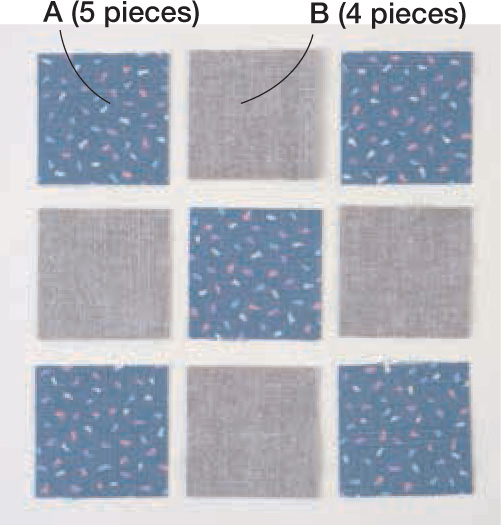
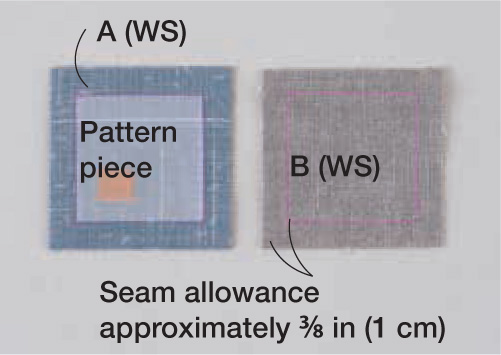 Trace the pattern piece on the back of fabrics A and B.
Trace the pattern piece on the back of fabrics A and B. 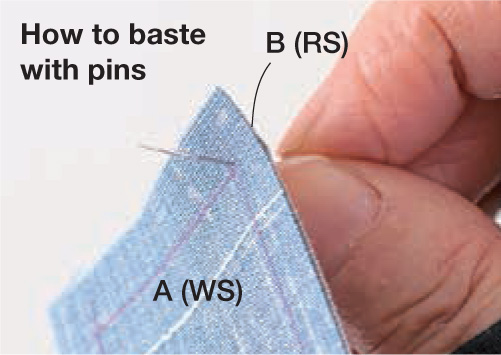 With right sides together and the markings aligned, insert pin at the corner of the marking from the fabric B side.
With right sides together and the markings aligned, insert pin at the corner of the marking from the fabric B side.  Hold the two fabrics in your left hand and insert pin along marked line on fabric A, pulling through to the marked line on the fabric B side.
Hold the two fabrics in your left hand and insert pin along marked line on fabric A, pulling through to the marked line on the fabric B side. 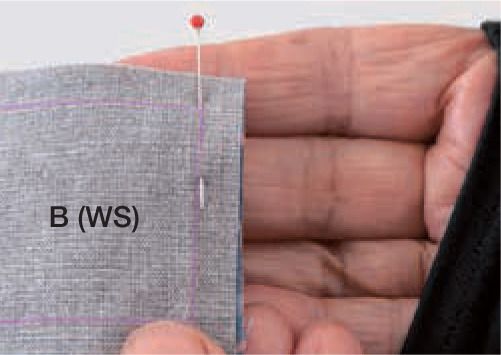 Because the corner markings were aligned at the beginning insertion point, the markings on both sides match up perfectly.
Because the corner markings were aligned at the beginning insertion point, the markings on both sides match up perfectly.  Repeat above steps on other side.
Repeat above steps on other side. 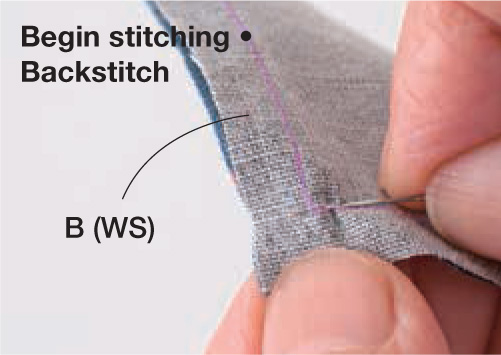 Without knotting the end of the thread, sew one stitch on the line slightly away from the corner marking.
Without knotting the end of the thread, sew one stitch on the line slightly away from the corner marking.  Without knotting the end of the thread, sew one stitch on the line slightly away from the corner marking.
Without knotting the end of the thread, sew one stitch on the line slightly away from the corner marking.
Remove pin, and sew another stitch up to the corner. 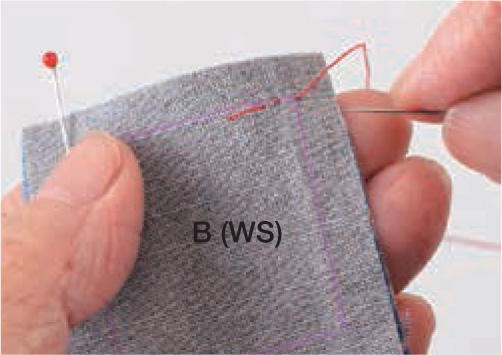 Pull needle, leaving a thread tail about in (1 cm) long. Stitch over the two previous backstitches to secure.
Pull needle, leaving a thread tail about in (1 cm) long. Stitch over the two previous backstitches to secure. 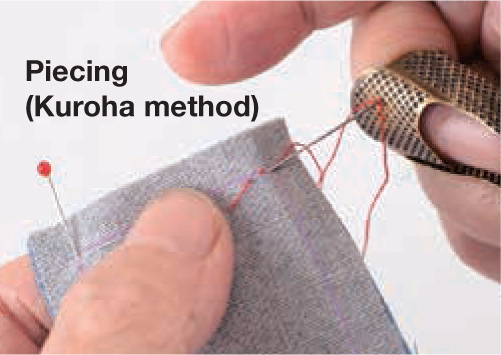

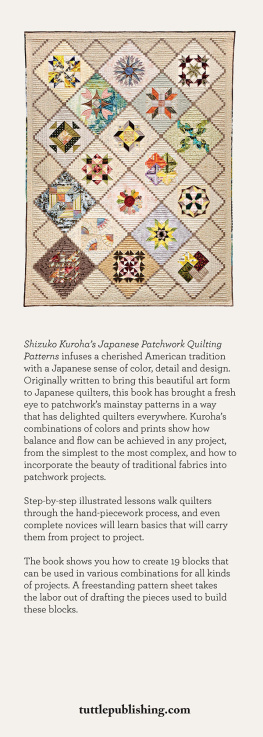


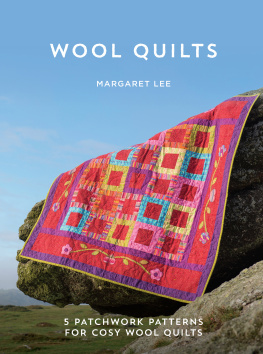

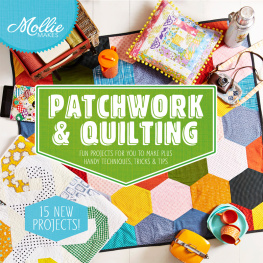

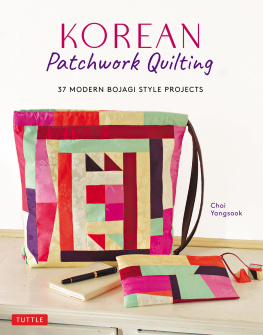
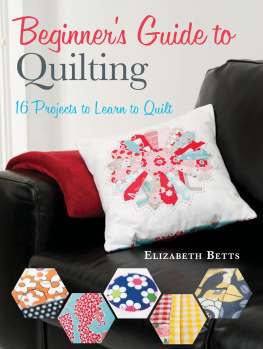

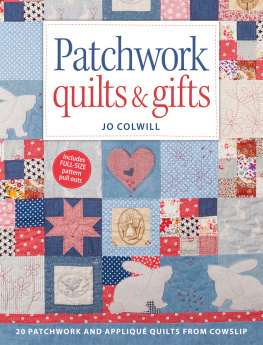
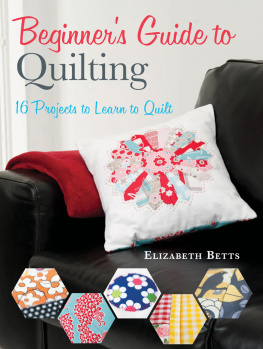
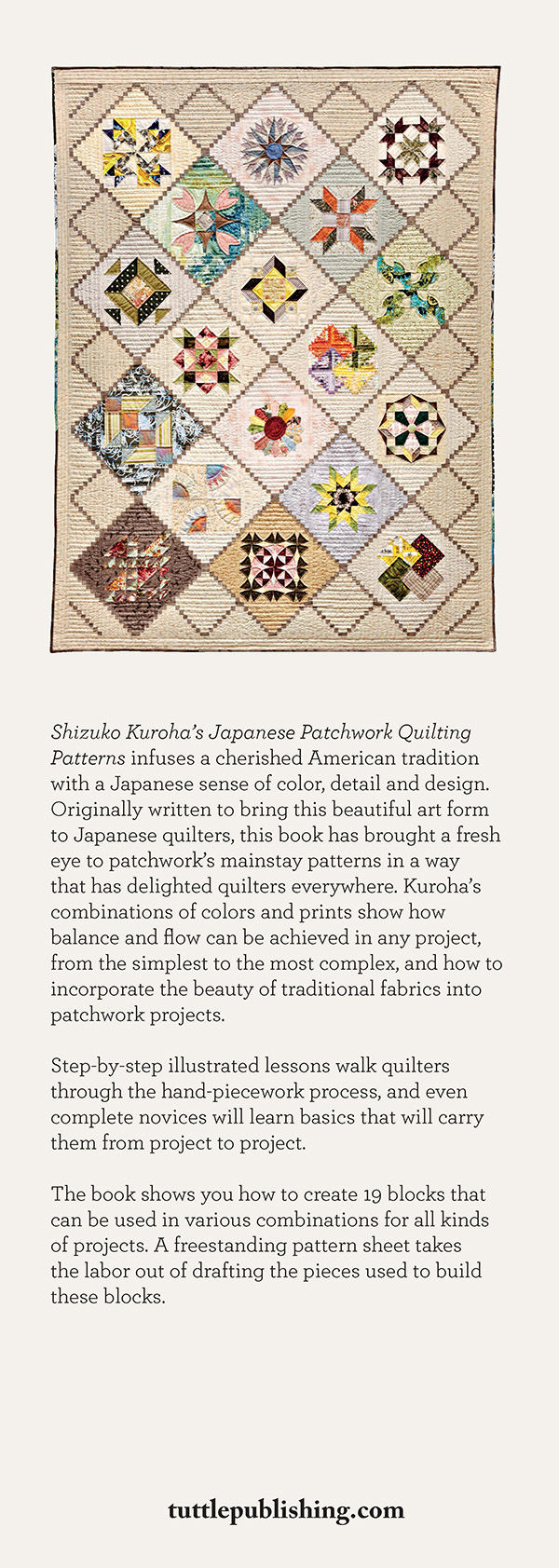

 Easy Projects with Square, Triangle and Hexagon Piecework Accents These handy items have simple piecework made from a maximum of three different pattern pieces. Try a variety of patterns and make multiples! 1 Mini Tote Bag This little tote is just the right size to fit a wallet, cell phone and sunglasses. Shorter handles maintain the overall proportion of the shape. 1 in (3 cm)-square pieces form the patchwork. Its possible to eke out pieces from even your smallest scraps. InstructionsSquare Quilt Block Lesson
Easy Projects with Square, Triangle and Hexagon Piecework Accents These handy items have simple piecework made from a maximum of three different pattern pieces. Try a variety of patterns and make multiples! 1 Mini Tote Bag This little tote is just the right size to fit a wallet, cell phone and sunglasses. Shorter handles maintain the overall proportion of the shape. 1 in (3 cm)-square pieces form the patchwork. Its possible to eke out pieces from even your smallest scraps. InstructionsSquare Quilt Block Lesson 2 3 Zippered Pouches This unique design has a tissue case on the zippered side of the pouch.
2 3 Zippered Pouches This unique design has a tissue case on the zippered side of the pouch.  Find a Pattern You Like to Create a Particular Mood 4 Drawstring Bag Striped indigo and grey with triangle patchwork for a sharp, modern feel. Quilting along the inner edge of the triangles is easier when the needle is inserted on the outer section of the trimmed seam allowance. InstructionsTriangle Quilt Block Lesson
Find a Pattern You Like to Create a Particular Mood 4 Drawstring Bag Striped indigo and grey with triangle patchwork for a sharp, modern feel. Quilting along the inner edge of the triangles is easier when the needle is inserted on the outer section of the trimmed seam allowance. InstructionsTriangle Quilt Block Lesson 5 Drawstring Purse The curved patchwork is versatile and depending on how the pieces are laid out, a variety of patterns can be achieved.
5 Drawstring Purse The curved patchwork is versatile and depending on how the pieces are laid out, a variety of patterns can be achieved.
 For the Drawstring Bag (4) thread the string loops to face in opposite directions, which makes pulling them easier. For the Drawstring Purse (5), pulling the lower beaded strings opens the gathers of the bag in the Japanese karakuri purse style.Add Piecework Flair to a Utilitarian Backpack with Matching Card & Coin Case 6 Light Backpack The strings that gather the opening closed become the shoulder straps for this design. Depending on how theyre tied, the strap lengths are easily adjustable.
For the Drawstring Bag (4) thread the string loops to face in opposite directions, which makes pulling them easier. For the Drawstring Purse (5), pulling the lower beaded strings opens the gathers of the bag in the Japanese karakuri purse style.Add Piecework Flair to a Utilitarian Backpack with Matching Card & Coin Case 6 Light Backpack The strings that gather the opening closed become the shoulder straps for this design. Depending on how theyre tied, the strap lengths are easily adjustable. 7 Matching Card & Coin Case Ideal for a drivers license and loose change, this case seamlessly matches the backpack in design 6. Because the backpack has a pocket and loop on the exterior, consider attaching the case and a key reel to the loop for quick access. Instructions
7 Matching Card & Coin Case Ideal for a drivers license and loose change, this case seamlessly matches the backpack in design 6. Because the backpack has a pocket and loop on the exterior, consider attaching the case and a key reel to the loop for quick access. Instructions
 Inside the pack, a pocket is positioned against the back, a perfect spot for valuables and a phone. Basic Piecework Techniques LESSON 1 Making a Simple Square Quilt Block Using the nine patch quilt method of connecting nine squares, these instructions show you how to sew straight sides together, and cover the fundamentals of hand quilting, including pin basting and using the backstitch technique for securing the thread at the beginning and ending of piecework.
Inside the pack, a pocket is positioned against the back, a perfect spot for valuables and a phone. Basic Piecework Techniques LESSON 1 Making a Simple Square Quilt Block Using the nine patch quilt method of connecting nine squares, these instructions show you how to sew straight sides together, and cover the fundamentals of hand quilting, including pin basting and using the backstitch technique for securing the thread at the beginning and ending of piecework.  Refer to for drafting pattern pieces and marking.
Refer to for drafting pattern pieces and marking. 
 Trace the pattern piece on the back of fabrics A and B.
Trace the pattern piece on the back of fabrics A and B.  With right sides together and the markings aligned, insert pin at the corner of the marking from the fabric B side.
With right sides together and the markings aligned, insert pin at the corner of the marking from the fabric B side.  Hold the two fabrics in your left hand and insert pin along marked line on fabric A, pulling through to the marked line on the fabric B side.
Hold the two fabrics in your left hand and insert pin along marked line on fabric A, pulling through to the marked line on the fabric B side.  Because the corner markings were aligned at the beginning insertion point, the markings on both sides match up perfectly.
Because the corner markings were aligned at the beginning insertion point, the markings on both sides match up perfectly.  Repeat above steps on other side.
Repeat above steps on other side.  Without knotting the end of the thread, sew one stitch on the line slightly away from the corner marking.
Without knotting the end of the thread, sew one stitch on the line slightly away from the corner marking.  Pull needle, leaving a thread tail about in (1 cm) long. Stitch over the two previous backstitches to secure.
Pull needle, leaving a thread tail about in (1 cm) long. Stitch over the two previous backstitches to secure. 